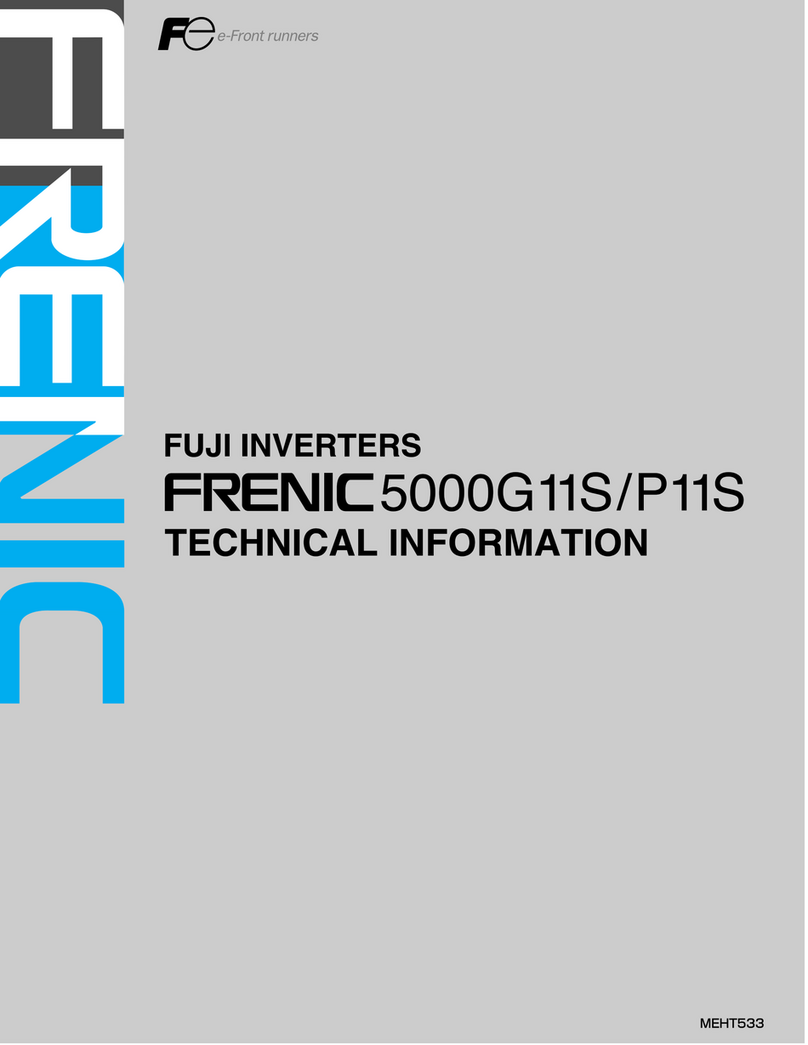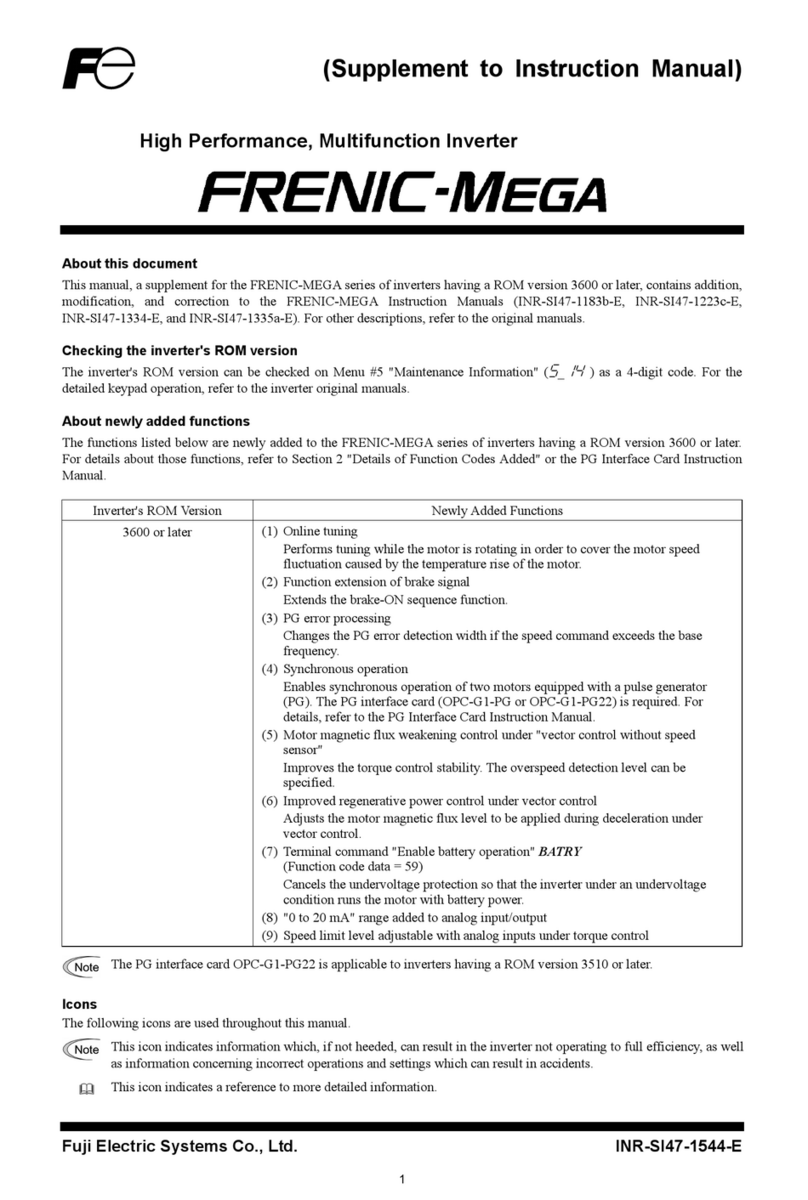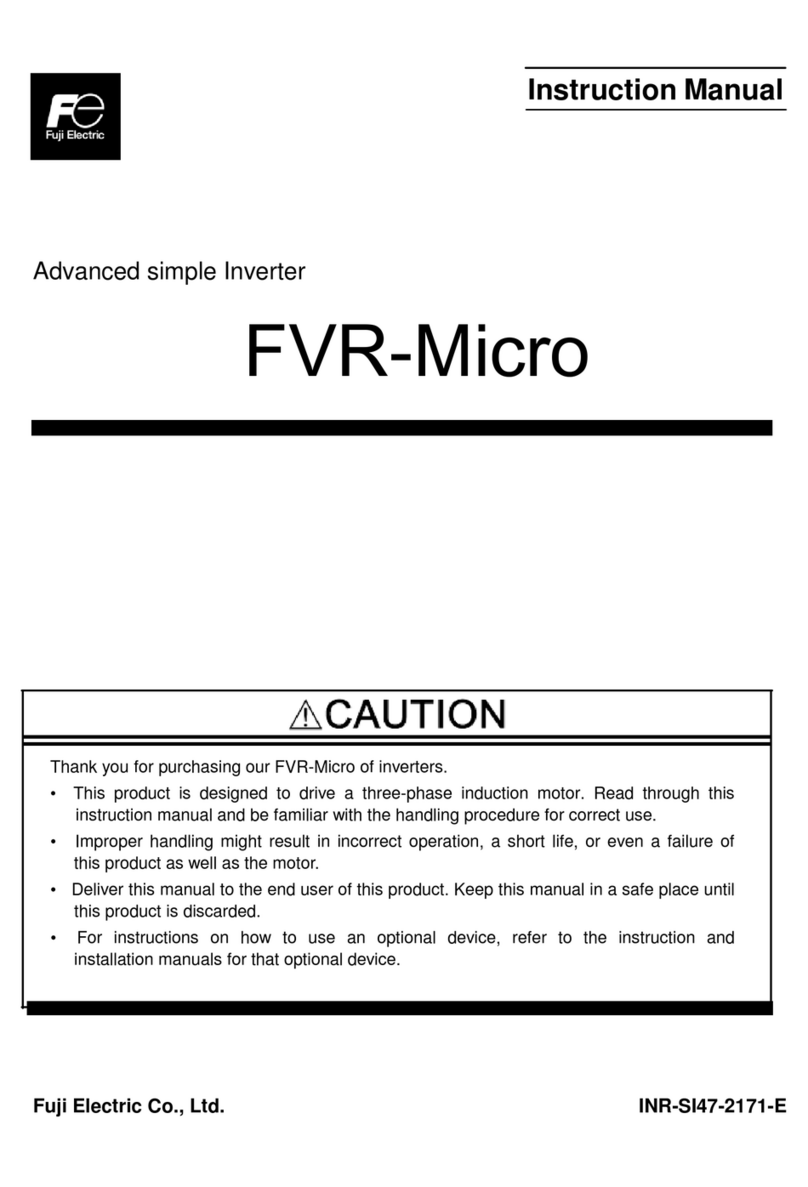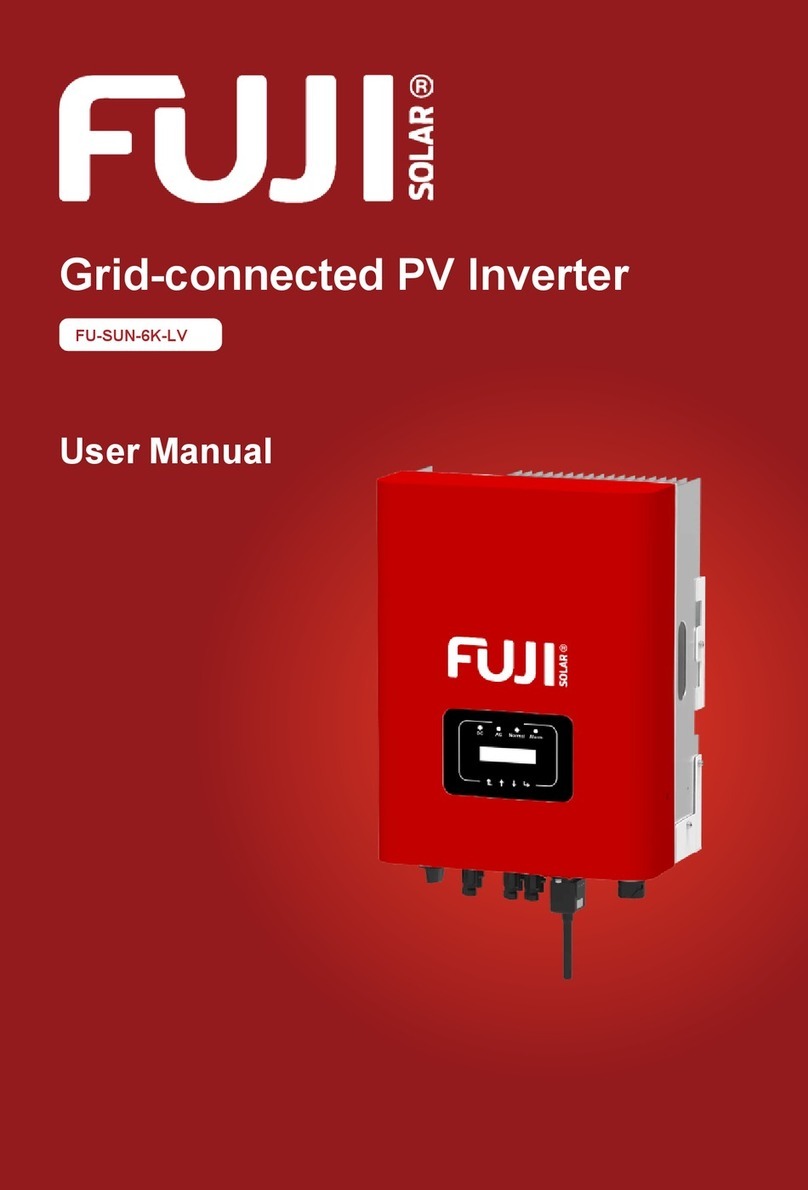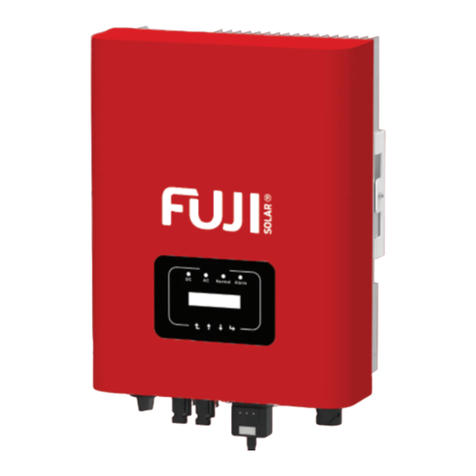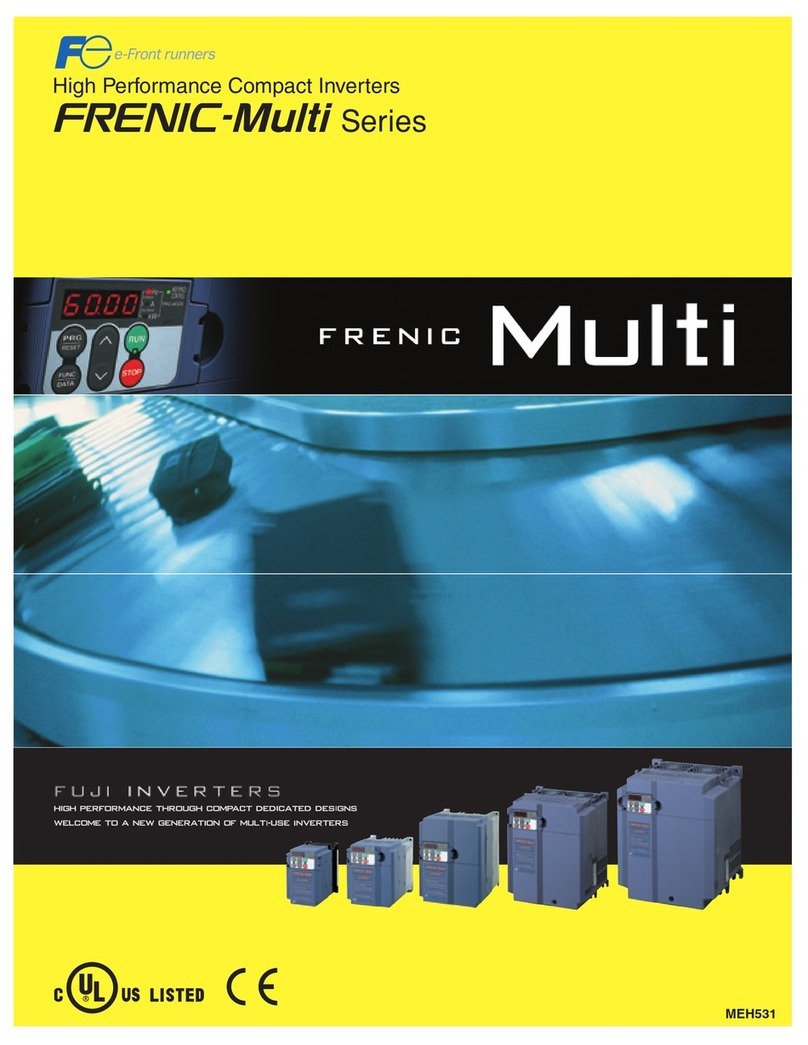
vi
Conformity to the Low Voltage Directive in the EU
If installed according to the guidelines given below, inverters marked with CE or TÜV are consid-
ered as compliant with the Low Voltage Directive 73/23/EEC.
1. The ground terminal G should always be connected to the ground. Do not use only a
residual-current-operated protective device (RCD)/earth leakage circuit breaker (ELCB)*
as the sole method of electric shock protection. Be sure to use ground wires whose size is
greater than power supply lines.
*With the exception of those exclusively designed for protection from ground faults.
2. When used with the inverter, a molded case circuit breaker (MCCB), residual-current-
operated protective device (RCD)/earth leakage circuit breaker (ELCB) or magnetic con-
tactor (MC) should conform to the EN or IEC standards.
3. When you use a residual-current-operated protective device (RCD)/earth leakage circuit
breaker (ELCB) for protection from electric shock in direct or indirect contact power lines
or nodes, be sure to use type B of RCD/ELCB at the power supply side of the electric
equipment for three-phase 200/400 V power supplies. For single-phase 200 V power sup-
plies, use type A.
When you use no RCD/ELCB, take any other protective measure that isolates the electric
equipment from other equipment on the same power supply line using double or rein-
forced insulation or that isolates the power supply lines connected to the electric equip-
ment using an isolation transformer.
4. The inverter should be used in an environment that does not exceed Pollution Degree 2
requirements. If the environment conforms to Pollution Degree 3 or 4, install the inverter in
an enclosure of IP54 or higher.
5. Install the inverter, AC or DC reactor, input or output filter in an enclosure with minimum
degree of protection of IP2X (Top surface of enclosure shall be minimum IP4X when it can
be easily accessed), to prevent human body from touching directly to live parts of these
equipment.
6. To make an inverter with no integrated EMC filter conform to the EMC directive, it is nec-
essary to connect an external EMC filter to the inverter and install them properly so that
the entire equipment including the inverter conforms to the EMC directive.
7. Do not connect any copper wire directly to grounding terminals. Use crimp terminals with
tin or equivalent plating to connect them.
8. To connect the three-phase or single-phase 200 V series of inverters to the power supply
in Overvoltage Category III or to connect the 3-phase 400 V series of inverters to the
power supply in Overvoltage Category II or III, a supplementary insulation is required for
the control circuitry.
9. When you use an inverter at an altitude of more than 2000 m, you should apply basic in-
sulation for the control circuits of the inverter. The inverter cannot be used at altitudes of
more than 3000 m.
10. The power supply mains neutral has to be earthed for the three-phase 400 V class
inverter.
